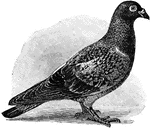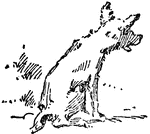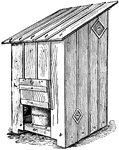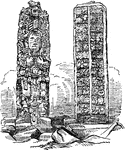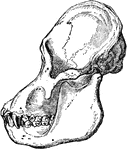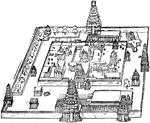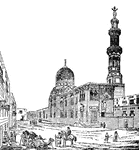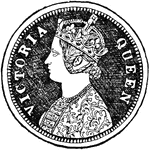
Half Pice
A money of account and a copper coin. Equal to three foourths of the United States cent at the time.
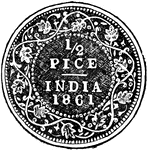
Half Pice
A money of account and a copper coin. Equal to three foourths of the United States cent at the time.

Pilchard
A fish resembling the herring, but thicker and rounder, with the under jaw shorter, the back more elevated,…

Surinam Toad
Its color is brownish olive, above and whitish below. It is sometimes 7 inches long, and has a peculiarly…

Penmanship
The front view of the hand showing the position of the forefinger, which should rest squarely on the…
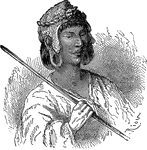
Manco Capac
An Inca Manco Capac, the first king of the Kingdom of Cuzco, according to Inca mythology.
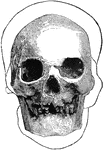
Hochelagan Skull
A front view of a Hochelagan skull, surrounded by the outline, on a larger scale, of the Cromagnon skull.

Swallowing Muscles
"The circular muscle of the mouth (1) and the buccinator or trumpeter's muscle (2) help the tongue to…
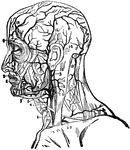
Facial Arteries
"1, primitive carotid artery dividing itself into carotid external and carotid internal; 3, occipital…
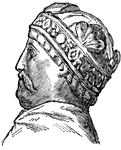
Charlemagne
He was born on April 2, 742, and was the eldest son of Pepin, the first king of the Franks, of the Carlovingian…
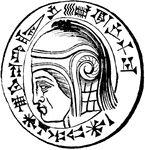
Nebuchadnezzar
"The most illustrious of Babylonian kings, was the son of Nabopolassar, the general of the Babylonian…
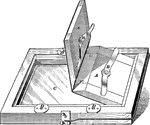
Painting Frame
"A printing frame that is well adapted to sheets not over 17 in. x 21 in. The frame is placed face downwards…
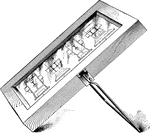
Painting Frame
"A printing frame that is well adapted to sheets not over 17 in. x 21 in. The frame is placed face downwards…

Great Black Backed Gull
"A long-winged water-bird with webbed feet, inhabiting all parts of the world. The group to which gulls…

Black-headed Gull
"A long-winged water-bird with webbed feet, inhabiting all parts of the world. The group to which gulls…
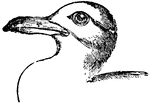
Killiwake Gull
"A long-winged water-bird with webbed feet, inhabiting all parts of the world. The group to which gulls…
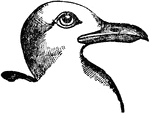
Small Black-Backed Gull
"A long-winged water-bird with webbed feet, inhabiting all parts of the world. The group to which gulls…

Herring Gull
"A long-winged water-bird with webbed feet, inhabiting all parts of the world. The group to which gulls…
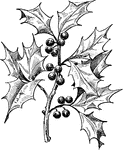
Holly
"A species of the genus Ilex, which contains about 175 species distributed throughout the world. They…
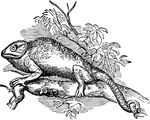
Chameleon
"A genus of saurian reptiles, constituting a distinct family, of very peculiar form and structure, and…
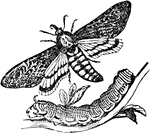
Death's Head Moth
"A species of Hawk-moth or lepidopterous insect of the family Sphingidae, not uncommon in some parts…

Prime
"Prime, Parade. In using prime to parry the thrust in seconde, pass your point over the adversary's…

Rampant Lion
"The lion holds an important place among the animals born in coat-armor. As early as the 12th century,…
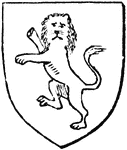
Gardant Lion
"The lion holds an important place among the animals born in coat-armor. As early as the 12th century,…
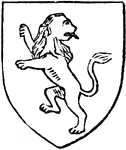
Rampant Regardant Lion
"The lion holds an important place among the animals born in coat-armor. As early as the 12th century,…

Passant Lion
"The lion holds an important place among the animals born in coat-armor. As early as the 12th century,…

Lion
"The lion holds an important place among the animals born in coat-armor. As early as the 12th century,…
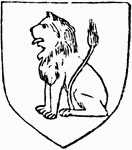
Lion
"The lion holds an important place among the animals born in coat-armor. As early as the 12th century,…

Magnified Louse
"A genus of insects, the type of a very numerous family, which forms the order Parasita or Auoplura.…

Miletus Coin
"A representation of a very early double stater of Miletus, in Ionia, of which the type is the lion's…

Fowler's Plough
"A framework of iron, balanced upon two large wheels. To each side of this framework there are attached…

Spinal Cord
"Magnified view of transverse section of the spinal cord through the middle of the Lumbad Enlargement:…

Chinese Tent
"The Chinese lower orders live much in tents. They are ordinarily of matting. These people are clever…
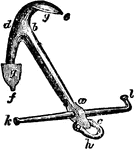
Common Anchor
"The shank is the straight part, ab; the square, ac, is that part of the shank to which the stock and…

Rodger's Anchor
"The stock is of iron in large as well as small anchors, and is made with a mortice, to fit over the…

Martin's Anchor
"The anchor is represented in the position in which it lies on the ground just before taking hold. The…

Howling Monkey Skull
"Side views of skull and hyoid bone of Howling Money." — Encyclopedia Britanica, 1893
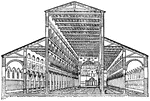
Basilica
"Sectional view of the old Basilica of St. Peter, before its destruction in the 15th century." —…

Stewarton Hive
"A hive largely and successfully used in Scotland, it is octagonal, and the "Quinby hive" of America…
